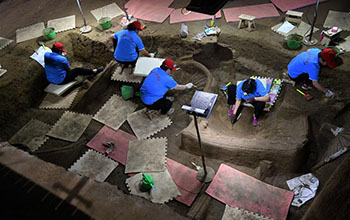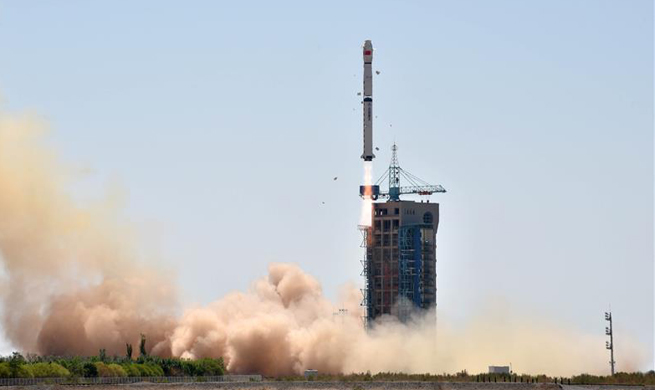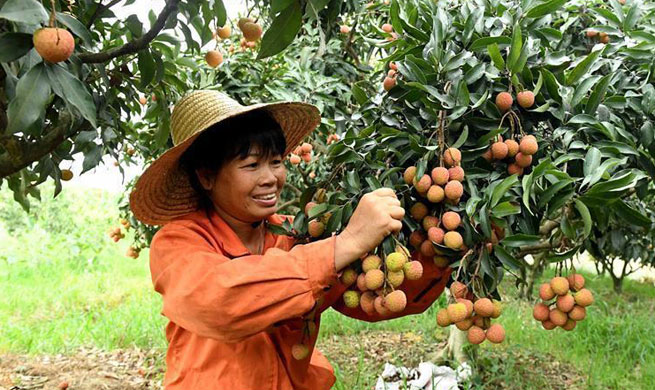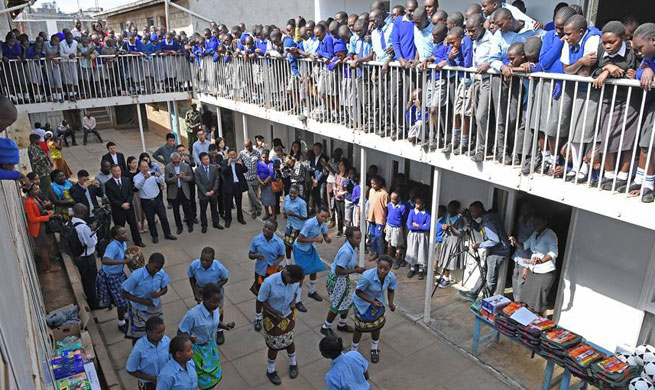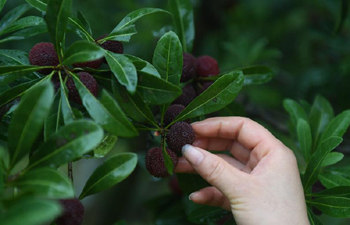VANCOUVER, June 15 (Xinhua) -- Researchers here announced this week they have developed a new polymer-infused concrete that is stronger than typical concrete, and could reduce tire waste while making concrete construction more environmentally-friendly.
The engineers at the University of British Columbia (UBC) said their new concrete was made of polymer extracted from recycled tires and could be used to make buildings, roads, dams and bridges.
The researchers created their concrete mix using 0.35 percent tire fibers to produce a stronger and more environmentally-friendly concrete,Obinna Onuaguluchi, a post-doctoral fellow in civil engineering at UBC, said in an interview.
The polymer fibers from tires makes the concrete stronger, more resilient and longer-lasting, he said.
Asphalt roads with rubber crumbs from shredded tires already exist in the United States, Germany, Spain, Brazil and China, "but the problem with crumb rubber is that when you add it to concrete, it tends to reduce the strength," he said.
"This time we are using this (new mixture) to prevent cracking," he said, noting that crumb rubber has traditionally been used as a filler in concrete mix, but not as a strengthener.
"Our lab tests showed that fibre-reinforced concrete reduces crack formation by more than 90 percent compared to regular concrete," Onuaguluchi said. "Concrete structures tend to develop cracks over time, but the polymer fibers are bridging the cracks as they form, helping protect the structure and making it last longer."
UBC civil engineering professor Nemkumar Banthia, who supervised the work, said the environmental and industrial impact of the research is significant.
Up to 3 billion tires were produced around the world every year, generating some 3 billion kg of fibre when recycled.
The new concrete "can be used almost anywhere," Banthia said, adding China and India, both producers of large amounts of tires annually, are leading the world in new concrete infrastructure construction.
"China ... produces almost 400 million tires every year," Banthia said, adding only 15 percent of those tires get recycled. "There's great deal of tires in China that are actually going into landfills."
He said those tires could be repurposed into the UBC concrete recipe and brought back into the construction industry for buildings, bridges and roads.
"By bringing in a (tire) by-product, you're not only fixing that problem of tire disposal, but also reducing the carbon footprint of the concrete industry in China or wherever else," Banthia said.
The applications for the new concrete are vast, he said, listing "all kinds of infrastructure, but in particular, structures that are subjected to extreme climate conditions and extreme loading."
The researchers used the new concrete to resurface the steps in front of a building at UBC last month.
Banthia's team was tracking its performance using sensors embedded in the concrete to look at the development of strain, cracking and other factors.
So far, the results support laboratory testing that showed it can significantly reduce cracking. Banthia said they are now planning further test projects in Canada, the United States and India.





